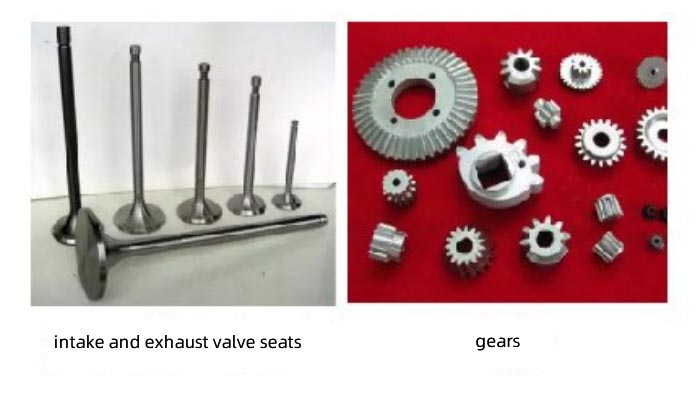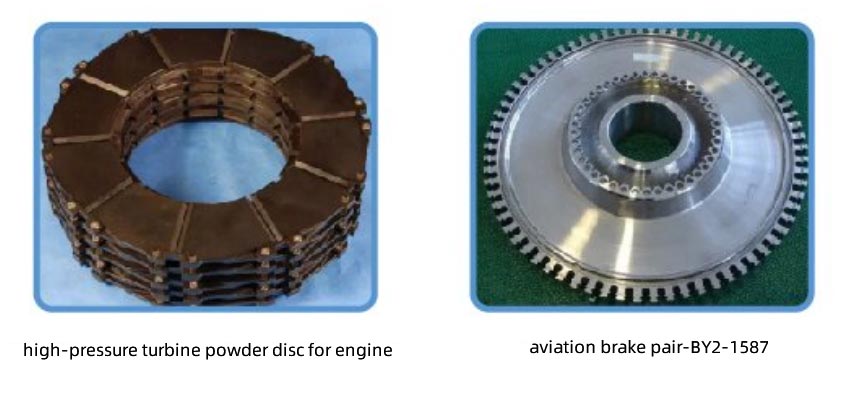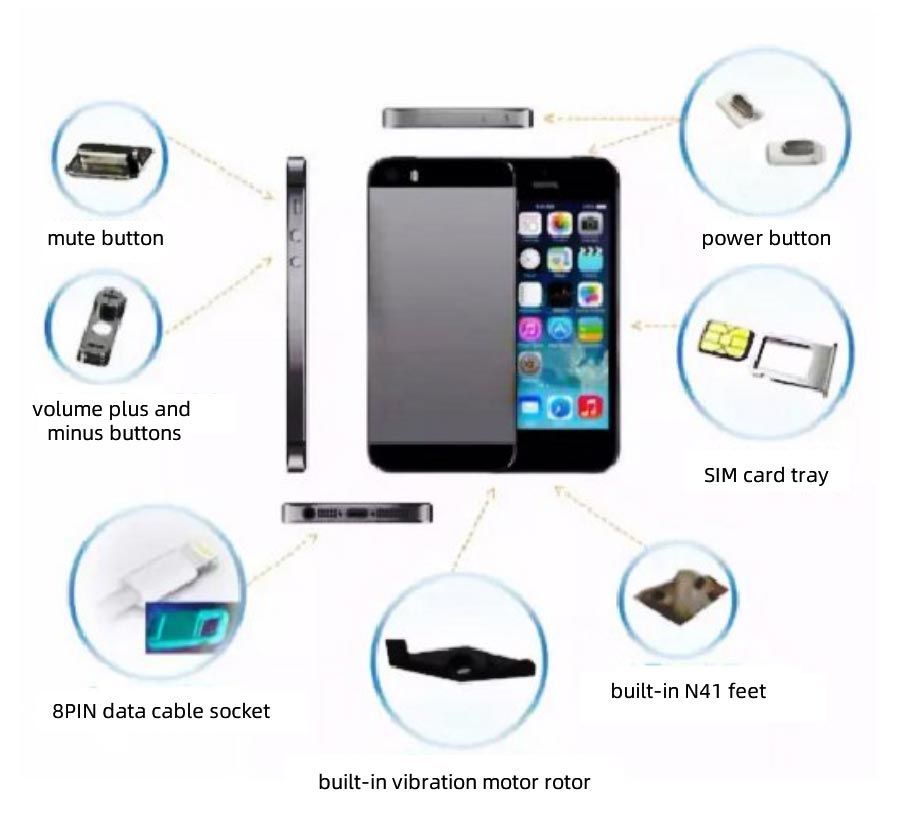Powder metallurgy process & application
Powder metallurgy is a process technology for preparing metal or using metal powder (or a mixture of metal powder and non-metal powder) as raw materials, forming and sintering, to produce metal materials, composite materials and various types of products.
The powder metallurgy products industry in a broad sense includes iron and stone tools, cemented carbide, magnetic materials and powder metallurgy products. The powder metallurgy products industry in the narrow sense only refers to powder metallurgy products, including powder metallurgy parts (most of them), oil-bearing bearings and metal injection molding products.
Powder metallurgy process characteristics
Compared with other processes, the material utilization rate of powder metallurgy is the highest, reaching 95%, and the energy consumption of parts is the lowest!
The density of the products is controllable, such as porous materials, high-density materials, etc.; uniform microstructure, no component segregation; near-shaped forming, raw material utilization rate>95%; less and no cutting, only 40-50% of cutting processing; material group The element is controllable, which is conducive to the preparation of composite materials; the preparation of insoluble metals, ceramic materials and nuclear materials.
The basic process of powder metallurgy
The basic process of powder metallurgy is powder making → mixing → forming → sintering → vibration grinding → secondary processing → heat treatment → surface treatment → quality inspection → finished product.
Flour milling
Flour milling is the process of making raw materials into powder. Commonly used milling methods include mechanical and physical and chemical methods.
The mechanical method does not change the chemical composition of the raw material, and prepares the powder by cutting/grinding the metal to split the material to create a new interface. The mechanical method can reduce or increase the particle size of the powder, and the metal powder will be hardened after grinding, but the shape of the powder is irregular and the powder fluidity becomes poor.
The physical and chemical method is to make liquid metal prepare powder by physical methods such as cooling and atomization; in addition, it can also be prepared by reducing metal oxides and salts with reducing agents based on chemical reactions such as reduction and dissociation. Atomization powder technology can effectively reduce the segregation of alloy components, so the obtained alloy powder composition is relatively uniform. Since the water atomization method uses higher density water as the atomization medium, the shape of the powder obtained is generally irregular.
Solid particles with a size greater than 0.001mm and less than 1mm are called powders. Generally, the shape of powder particles includes spherical, nearly spherical, polygonal, flake, dendritic, irregular, porous sponge, and butterfly shapes.
Mix
Mixing is the process of mixing various required powders in a certain proportion, and homogenizing them to make green powder. It is divided into three types: dry, semi-dry, and wet, double cone mixer, V-type mixer , Dual motion mixers are used for different requirements.
The mixing of powder is not uniform, the forming process is easy to delamination and fracture, the sintering process is easy to burst and deform, and the mechanical properties such as product hardness and density do not meet the requirements.
Forming
Forming is the process of putting a uniformly mixed mixture into a compression mold and pressing it into a parison with a certain shape, size and density under a pressure of 15-600 MPa. There are two methods of pressure forming and non-pressure forming. Pressure forming The most widely used is compression molding.
Sintering
Sintering is a key process in the powder metallurgy process, and the formed compact is sintered to obtain the required final physical and mechanical properties.
Sintering is divided into unit sintering and multi-component sintering. In addition to ordinary sintering, there are loose sintering, immersion method, and hot pressing method.
Sintering is different from metal melting, at least one element is still in the solid state during sintering. During the sintering process, the powder particles undergo a series of physical and chemical processes such as diffusion, recrystallization, fusion welding, compounding, and dissolution, and become metallurgical products with a certain porosity.
Post-processing
The treatment after sintering can adopt various methods according to different product requirements. Such as finishing, oil immersion, machining, heat treatment and electroplating, steam treatment, etc. In addition, in recent years, some new processes such as rolling and forging have also been applied to the processing of powder metallurgy materials after sintering, and have achieved ideal results.
- Impregnation
Use the capillary phenomenon of the porosity of the sintered parts to be immersed in various liquids. For lubrication purposes, it can be soaked in lubricating oil; in order to improve the strength and anti-corrosion ability, it can be soaked in copper solution; for surface protection, it can be soaked in resin or varnish.
- Steam treatment
Due to the existence of pores in powder metallurgy products, this brings difficulties to surface protection. Steam bluing treatment is very important for meters, military industry and powder metallurgy products with anti-corrosion requirements, and can improve the rust resistance and airtight gaps of powder metallurgy parts.
- Cold surface pressure
To improve the dimensional accuracy of the parts and reduce the surface roughness, shaping can be used; to increase the density of the parts, multiple pressing can be used; to change the shape of the parts, fine pressing can be used.
- Heat treatment
Due to the existence of pores, for products with porosity greater than 10%, liquid carburizing or salt bath heating shall not be used to prevent salt solution from immersing in the pores and causing internal corrosion; for products with porosity less than 10%, it can be used with general steel The same heat treatment methods, such as overall quenching, carburizing quenching, carbonitriding quenching, etc.; heat treatment can improve the strength and hardness of iron-based products.
Application of powder metallurgy
The application range of powder metallurgy products is very wide, from general machinery manufacturing to precision instruments, from hardware tools to large-scale machinery, from electronics industry to motor manufacturing, from civil industry to military industry, from general technology to cutting-edge high technology. The figure of metallurgical craftsmanship.
Powder metallurgy materials can be divided into powder metallurgy porous materials, powder metallurgy structural parts, powder metallurgy anti-friction materials, powder metallurgy tool and die materials, powder metallurgy friction materials, powder metallurgy electromagnetic materials, powder metallurgy high temperature materials, etc.
Typical application: automotive industry
Powder metallurgy valve seats, valve guides, VCTs and sprockets, etc., can have high strength, high wear resistance and excellent heat resistance. Such as intake and exhaust valve seats, gears.

Typical application: aerospace industry
Special functional materials are mainly used for auxiliary machines, instruments and airborne equipment of aircraft and engines. High-temperature and high-strength structural materials are mainly used for important structural parts of aircraft engines. Such as high-pressure turbine powder disc for engine, aviation brake pair-BY2-1587.

Typical application: electronics
Such as mute button, power button, volume plus and minus buttons, SIM card tray, 8PIN data cable socket, built-in N41 feet, built-in vibration motor rotor.

The development direction of powder metallurgy
Powder metallurgy technology is developing in the direction of high densification, high performance, integration and low cost. The details are as follows:
1. Representative iron-based alloys will develop into large-volume precision products and high-quality structural parts.
2. Manufacture a high-performance alloy with uniform microstructure, difficult to process and completely dense.
3. The enhanced densification process is used to produce special alloys that generally contain mixed phase compositions.
4. Manufacture of non-uniform materials, amorphous, microcrystalline or metastable alloys.
5. Processing unique and non-general composite parts of shape or composition.
Article source: China Powder Network
